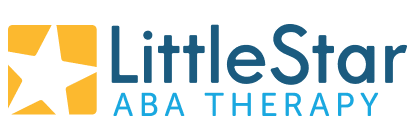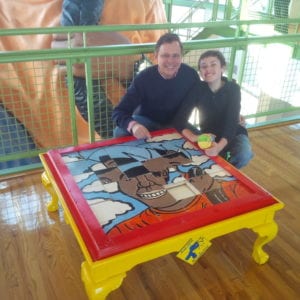Former Autism Speaks leader joins Little Star Center
Dan Unumb, former executive director of the Autism Speaks Legal Resource Center, is now a part-time contractor working in partnership with Little Star Center.
Dan is advocating for families at Little Star Center and throughout the state as they face legal challenges with insurance coverage. He also is in the development stages of a new Autism Legal Resource Center to support families impacted by autism across the country. Dan and his wife, Lorri, have a son, Ryan, who is impacted by autism. Dan is passionate about his work with Little Star Center and long-term goal to create a national Legal Resource Center. Read on to learn more about Dan’s work.
What attracted you to joining Little Star Center? Innovative and talented personnel. Mary (Rosswurm) has great vision and Tim (Courtney) has expertise. Everyone has a commitment to quality services and wanting to do more. I am grateful for the Board of Directors at Little Star Center for their foresight in ensuring that the Autism Resource Center continues on now that Autism Speaks has decided to discontinue it.
What will be your primary role for Little Star Center? To provide legal analysis of autism treatment coverage issues and legislation and consult with clinicians to be sure that families do not face undue barriers to their treatment or limitations to their treatment that are not allowed under their insurance plan.
How did you get into this field of work? My 15-year-old son, Ryan, was diagnosed with autism at the age of 2. At the time, I was an attorney with the U.S. Department of Justice. While my wife, Lorri, and I had great insurance, we found that it did not cover ABA therapy, even though every autism expert recommended it.
Lorri and I literally worked to pay for ABA therapy for Ryan. It’s basically you, a checkbook and a therapist. We sold our house and moved to South Carolina to be near family and have a home that was less expensive. When we took a breath, we realized ABA therapy is medically necessary and there should be insurance coverage – and there should be insurance coverage to pay for it.
We found a clause under Medicaid and started to work on getting coverage in South Carolina. We formed groups, pooled our money and met with legislators. After we got a bill through both the house and the senate in South Carolina, the governor vetoed it. This was in 2007. We got people to rally at the last minute to get the veto overwritten. This bill is now known as Ryan’s Law.
Since that time, we have created a national summit where professionals come together to address various laws and insurance coverage requirements. I ended up working for Autism Speaks, where I was the executive director of the Legal Resource Center until it was discontinued late last year. Lorri continues to serve as vice president of government of affairs.
What will the legal resource center provide to families when it is established? The benefits will be direct and indirect. We will have an educational emphasis where we educate and train other lawyers in this area. We will provide resources for parents to help them understand what they can do on their own behalf and offer them a broad network of attorneys in which they can use (for insurance issues).
What do you think is the biggest challenge facing families seeking ongoing ABA therapy for their child with autism? The healthcare law and what is going to happen nationally with Medicaid and private insurance will impact all of us. Families need the tools and rights to ensure coverage for this medically necessary condition. It will be important to have a state law mandate that includes broad coverage.
What do you enjoy most about serving families affected by autism? Everyone’s path is different and I appreciate that more and more—from behavior issues to non-verbal challenges. I feel a kinship with these parents. I enjoy the impact we can make with our advocacy work. It advances the ball. It will have a lifelong impact for the children directly involved and for their families and future generations.




